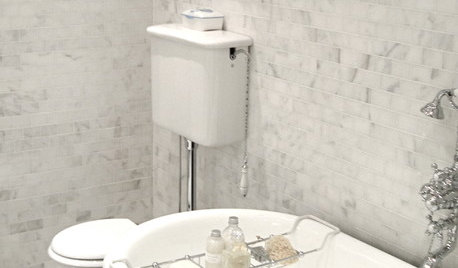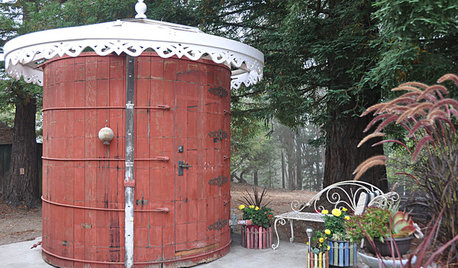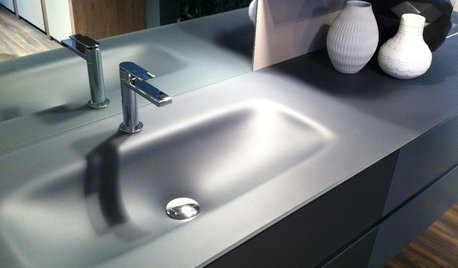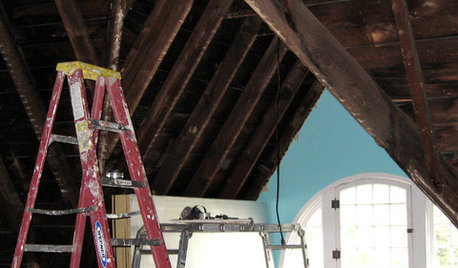Drain Pipe size from Toilet to Septic Tank ??
Pooh Bear
17 years ago
Related Stories

VINTAGE STYLEVintage Style: High-Tank Toilets
Homeowners are adding the feeling of yesteryear in today’s bathrooms
Full Story
OUTBUILDINGSSee an Outdoor Bathroom Made From a Water Tank
This repurposed fixture in a California backyard is now the owners' favorite bathing spot
Full Story
MOST POPULARThanksgiving Tales: When the Turkey Tanks
Houzz readers prove adept at snatching victory from the jaws of entertaining defeat
Full Story
BATHROOM DESIGNSink Pipes Worth Seeing
Decorative Options Let You Get Creative With Those Fixtures Under the Sink
Full Story
HOMES AROUND THE WORLDHousehold Habits and Customs to Borrow From Other Countries
Discover why salt may be the perfect house-warming gift, how to clean rugs in snow and why you should invest in a pair of ‘toilet slippers’
Full Story
BATHROOM DESIGNHow to Choose the Best Drain for Your Shower
Don't settle for a cheap fix when you can pick a shower drain that suits your style preferences and renovation codes alike
Full Story
DECORATING GUIDESDesigning Nemo: 30 Fish Tanks Make a Decorative Splash
Bring an otherworldly glow and a calming vibe to your home with the living art of an aquarium
Full Story
BATHROOM DESIGN10 Bathroom Standouts From Italy's Big Expo
Sleek finishes, high-tech fixtures and more. Discover some of CERSAIE 2013's best and brightest bathroom offerings
Full Story
FUN HOUZZDon’t Be a Stickybeak — and Other Home-Related Lingo From Abroad
Need to hire a contractor or buy a certain piece of furniture in the U.K. or Australia? Keep this guide at hand
Full Story
REMODELING GUIDES8 Lessons on Renovating a House from Someone Who's Living It
So you think DIY remodeling is going to be fun? Here is one homeowner's list of what you may be getting yourself into
Full Story







lazypup
Pooh BearOriginal Author
Related Professionals
Boise Plumbers · Wolf Trap Handyman · East Tulare County Kitchen & Bathroom Remodelers · Grain Valley Kitchen & Bathroom Remodelers · Shamong Kitchen & Bathroom Remodelers · 93927 Kitchen & Bathroom Remodelers · Camarillo Kitchen & Bathroom Remodelers · Franconia Kitchen & Bathroom Remodelers · Roselle Kitchen & Bathroom Remodelers · Vancouver Kitchen & Bathroom Remodelers · Weymouth Kitchen & Bathroom Remodelers · Wilson Kitchen & Bathroom Remodelers · Joppatowne Kitchen & Bathroom Remodelers · North Chicago Kitchen & Bathroom Remodelers · Tanque Verde Kitchen & Bath Fixtureslazypup
Pooh BearOriginal Author
poconojc_ptd_net